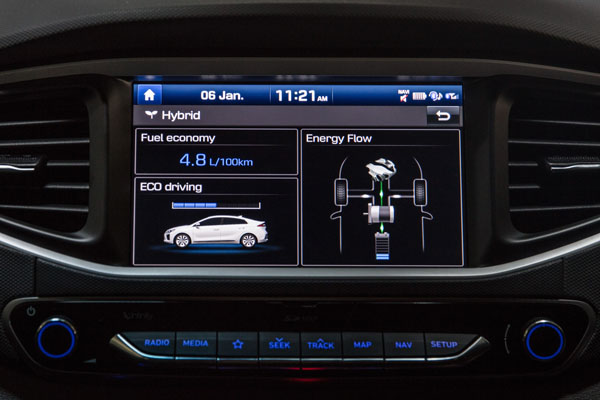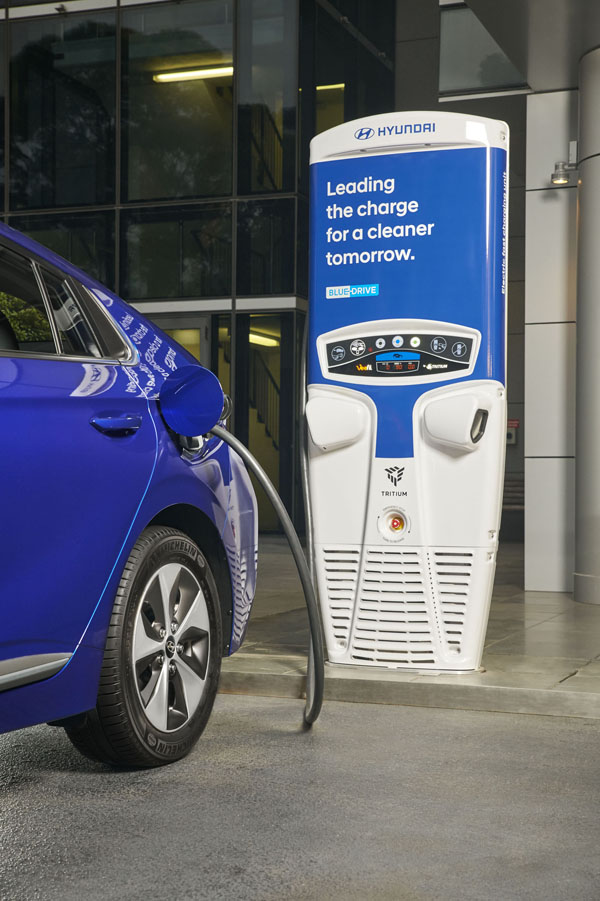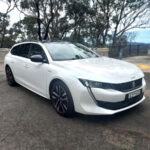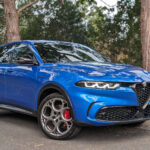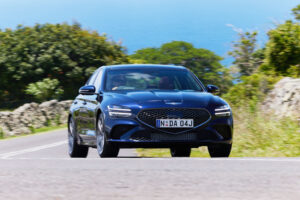 Hyundai Ioniq is the South Korean marque’s indication of the immediate future in clean running cars. It comes in three stages of technology:
Hyundai Ioniq is the South Korean marque’s indication of the immediate future in clean running cars. It comes in three stages of technology:
The 2019 Ioniq Hybrid is powered primarily by a petrol engine, with a battery-powered electric motor providing assistance as required. Regenerative braking allows the hybrid system to recover much of the kinetic energy that is lost in conventional vehicles, using it to charge the high-voltage battery.
In this mechanical layout the Hyundai is similar to the Toyota Prius models we have seen in Australia for many years now.
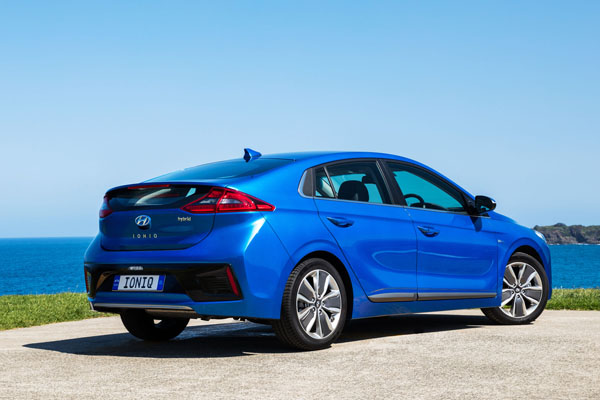 Next up the rung is the Ioniq Plug-in. Again it combines a petrol engine with an electric motor. It can make electric-only trips of up to 63 kilometres. It can be plugged in to charge the high-voltage battery.
Next up the rung is the Ioniq Plug-in. Again it combines a petrol engine with an electric motor. It can make electric-only trips of up to 63 kilometres. It can be plugged in to charge the high-voltage battery.
At the top of the technology tree is the flagship Ioniq Electric, it’s a pure electric car with a real-world range of about 230 km and the capability for charging its high-voltage lithium-ion polymer battery to 80 percent capacity in approximately 23 minutes.
Every 2019 Hyundai Ioniq is available in Elite and Premium trim levels, and each boasts safety, convenience and driver appeal familiar from Hyundai’s conventional-engine line-up.
We have previously tested the hybrid model, this week’s test was in the Ioniq Plug-in in Premium trim.
STYLING
Lines of the Hyundai Ioniq are sleek and clean and don’t make the mistake crying out, “I am different” as do the Toyota Prius and Nissan Leaf for example.
The shape not only pleases us, but also people who are far better qualified. Hyundai Ioniq has won the 2017 Green Good Design Award from the Chicago Athenaeum: Museum of Architecture and Design and the European Centre for Architecture Art Design and Urban Studies.
INFOTAINMENT
Digital instrumentation can be customised to the driver’s desires. The infotainment screen is an 8.0-inch unit and is clear and easy to read and use.
Satellite navigation, Apple Car Play and Android Auto are standard. An Infinity premium audio system with eight speakers and external amplifier offers good quality sound.
ENGINES / TRANSMISSIONS
Hyundai Ioniq hybrid has a 1.6-litre petrol engine, a permanent magnet synchronous electric motor and 1.56 kWh lithium-ion polymer battery. The powerplant is mated with a six-speed dual clutch automatic transmission.
SAFETY
In a high-tech car like the Hyundai Ioniq it’s no surprise the latest in active safety features are standard. These include electronic stability control, ABS brakes with brake assist and electronic brake force distribution; autonomous emergency braking; adaptive cruise control; lane keep assist; blind spot monitoring and rear cross traffic alert.
A reversing camera with dynamic guidelines is complemented by front and rear parking sensors.
On the passive safety front are airbags for the driver and front passenger, a knee airbag for the driver, side airbags for driver and front passenger and side curtain units front and back.
DRIVING
The Ioniq drives pretty much like any other car … except for the near silence when running purely on electric power. It takes off smoothly and responds instantly to the throttle. Even when the petrol engine joins the action the noise level is only a little higher.
We only had one occasion to charge the Ioniq Plug-in. That was at the Pacific Fair shopping centre close to home. We spent less than an hour there to do some grocery shopping and enjoy a cup of coffee and during that time we gained a further 15 kilometres of driving range. (Hint: a further benefit of the PacFair charging spot is that it’s only a few metres away from the entrance to the shops.)
Starting with a full petrol tank and drive battery our test Ioniq averaged just 3.2 litres per hundred kilometres during the 325 kilometres of our test. Much of that was on the motorway, where a hybrid is not at its best, which makes it even more impressive.
The ride/handling equation leans towards the comfort side, which makes sense in a family hatchback. Steering has less feel than we like, other than that the Ioniq is a most pleasant drive.
Comfortable front seats are enhanced by being both heated and ventilated. In summertime on the Gold Coast we really appreciated the ventilation. Indeed, there was temptation to add this feature in the Safety section of this review because it makes a huge difference.
The second row is comfortable with enough room for three adults without too much of a squeeze. The typical Mum-Dad-three-juniors works well. The aero slope of the roof means ducking lower than some adults may like.
A 340-litre luggage space is impressive for a car carrying large batteries. A 60:40 split-fold seat means up to 1505 litres is there for the taking.
Just one complaint: why does this ultra-modern car have a ridiculous foot-operated parking brake?
SUMMING UP
Hyundai Ioniq doesn’t just point to the way of the future – it has brought the future forward to today. Good looking, simple to drive and with minimal emissions it should be checked out by everyone.
AT A GLANCE
MODEL RANGE
Note: These prices do not include government or dealer delivery charges. Contact your local Hyundai dealer for drive-away prices.
SPECIFICATIONS (Hyundai Ioniq Plug-In Hybrid Elite 1.6-litre petrol/electric five-door hatch)
ENGINE:
Capacity: 1.580 litres
Configuration: Four cylinders in line
Maximum Power: 77 kW @ 5700 rpm
Maximum Torque: 147 Nm @ 4000 rpm
Fuel Type: Standard unleaded petrol
Combined Fuel Cycle (ADR 81/02): 1.1 L/100km
CO2 Emissions: 26 g/km
DRIVELINE: Six-speed automatic
DIMENSIONS, WEIGHT AND CAPACITIES:
Length: 4470 mm
Wheelbase: 2700 mm
Width: 1820 mm
Height: 1450 mm
Turning Circle: Not supplied
Kerb Mass: 1550 kg
Fuel Tank Capacity: 43 litres
BRAKES:
Front: Ventilated disc
Rear: Solid disc
STANDARD WARRANTY:
Five years / unlimited kilometers




